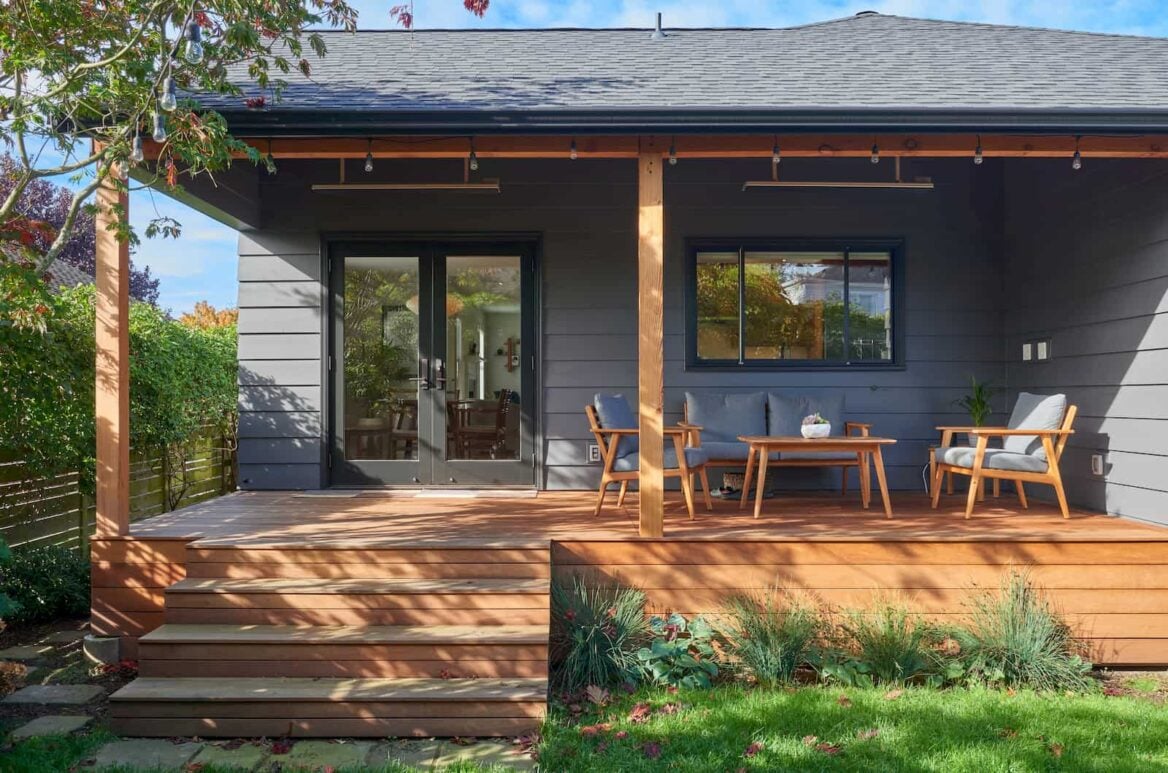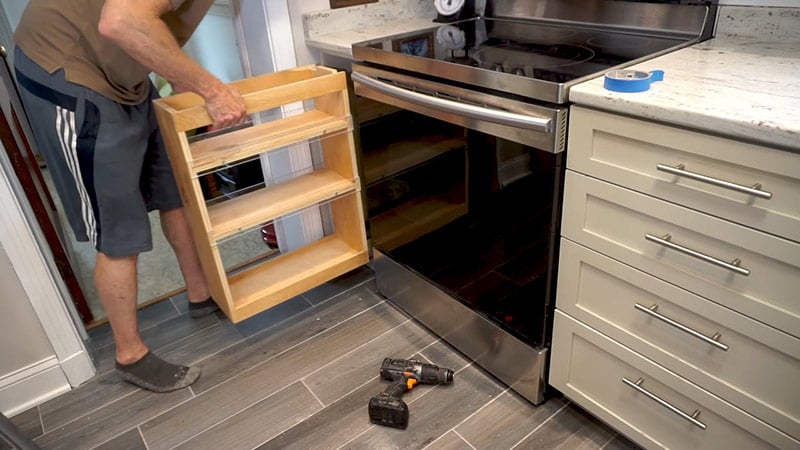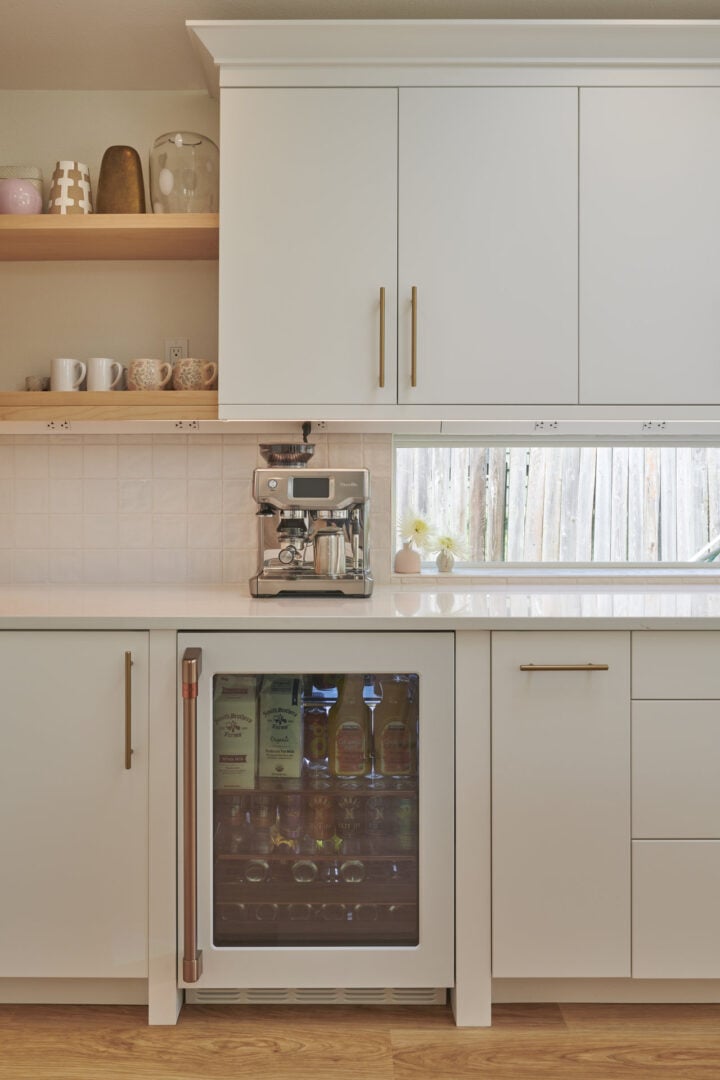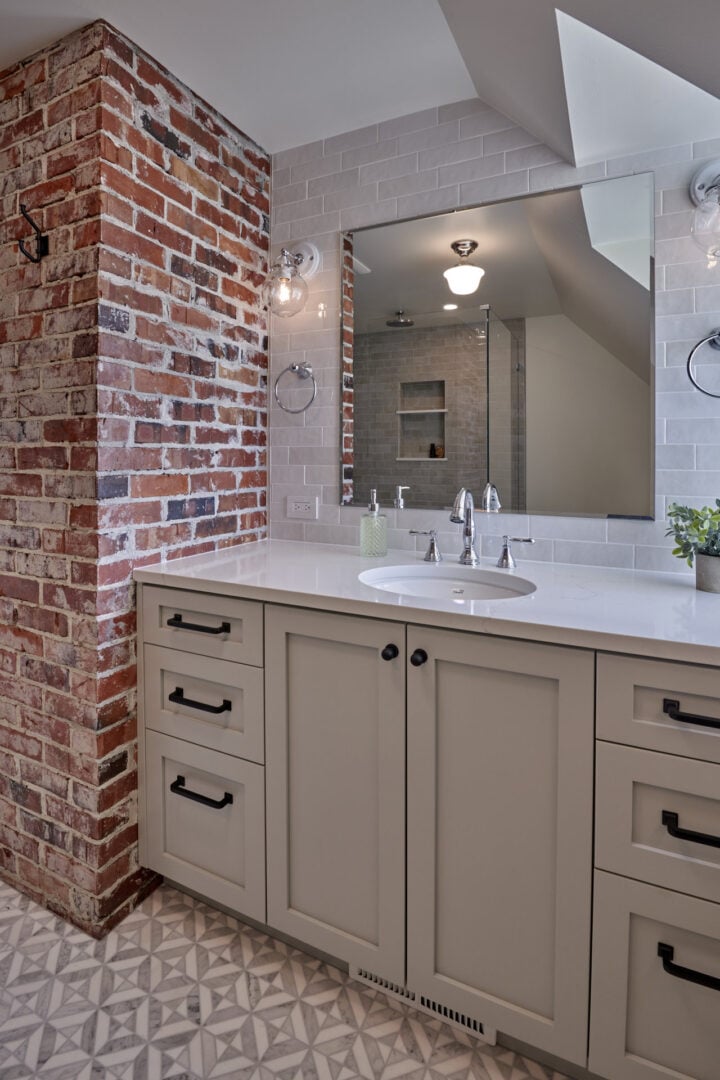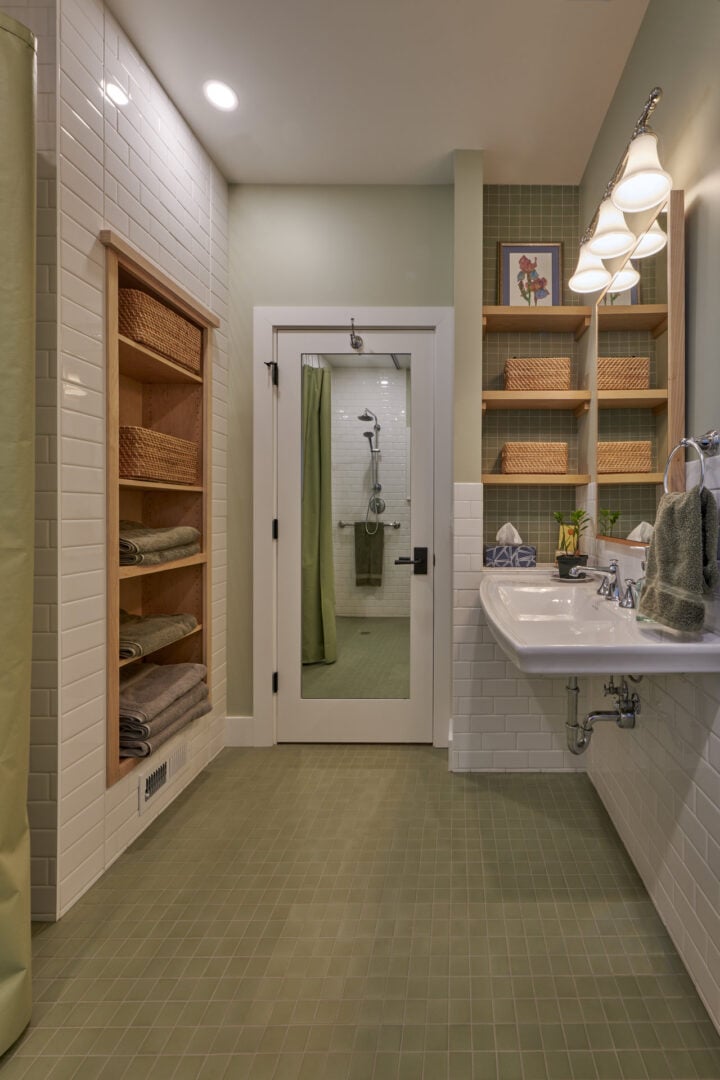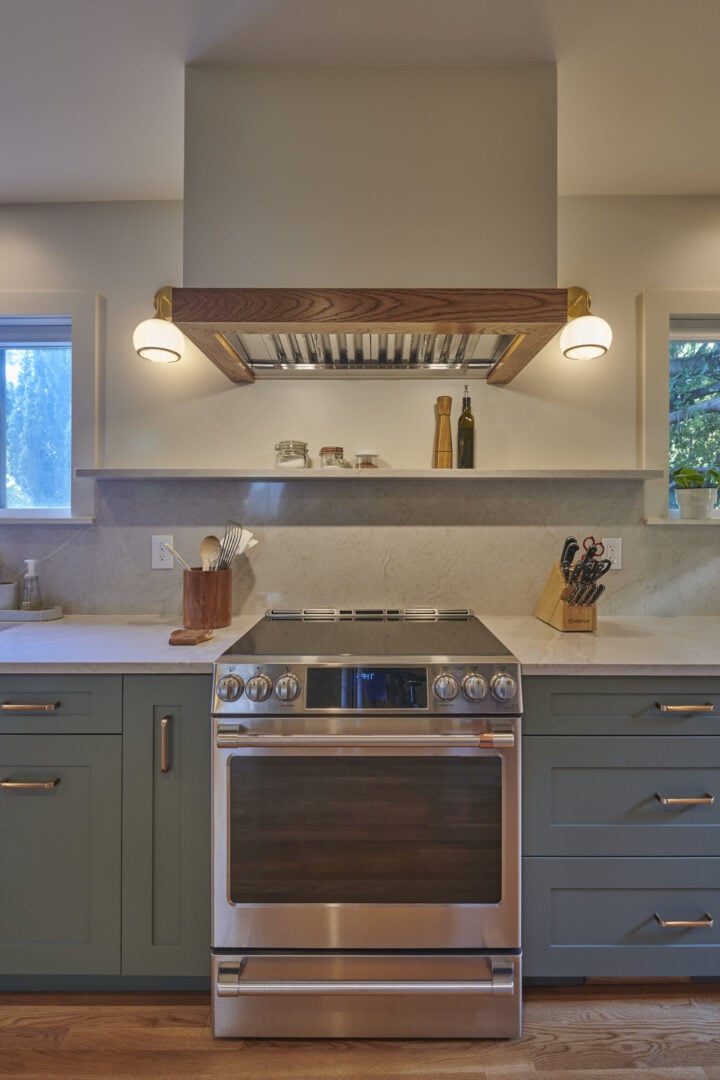Have you ever ordered something online and when it arrived it was way smaller or larger than what you expected? Or a completely different shade or texture? We’ve all been there. Unrealistic expectations are par for the course in the design build industry.
While we can’t entirely prevent surprises, our experienced CRD team members are adept at navigating through them. Our wealth of knowledge comes from having been there and done that for many years. We make troubleshooting a breeze by communicating issues clearly, ensuring that problems causing delays and disruptions are well-understood.
Join two of our production experts, Dave Callahan and Tom Rummel, as they delve into the art of effectively and clearly communicating your design-build process to clients. The goal is not only to meet your expectations but also to help align those expectations with reality. Managing the inevitable challenges becomes smoother when you have knowledgeable CRD team members guiding you through the process.
We suggest tuning into this podcast if you’re planning your first remodeling project and want to be better equipped to handle unexpected challenges and common issues that may come up in your home.
For those not keen on podcasts, read on to discover the most common unrealistic expectations our clients have had before the commencement of their building projects and how CRD members successfully navigated and addressed these surprises.
Expectation vs Reality
Each project is unique because every person is different, each household has distinct needs, and every house possesses a set of outdated features that might not comply with codes or regulations. At CRD, we strive to estimate a realistic timeline for each project, but in the realm of design-build and home services, unexpected problems often arise, disrupting the planned schedule. Setting a rigid and unrealistic timeline is a common customer expectation that doesn’t always align with reality.
“A lot of projects are unique; nothing is ever the same or similar.” said Dave Callahan, CRD Design-Build Project Manager.
Dave and Tom emphasize that they understand how frustrating an unpredictable timeline can be for clients because their home is their life. While we can’t guarantee a flawless timeline or prevent unexpected issues, we can alleviate the inconvenience that comes with a prolonged schedule. We prioritize excellent care and communication, especially when timelines are extended, making it our primary goal to keep our customers happy and well-informed as the project evolves.
Examples of Unexpected Issues That Change the Timeline
- Oil tanks are a common unexpected issue that disrupt the timeline of a Seattle home remodel. Often-times the home owner doesn’t even know about it since they are buried underground, it’s empty, and it’s in the way of the build. An oil tank requires the timeline to extend so carpenters can properly manage, displace or move it.
- An ordered item is predicted to arrive late which pushes our team at CRD to delay the timeline for an unforeseeable amount of time.
- An ordered item arrives broken. An item arriving broken can set back the timeline especially if the item is custom ordered. This is out of everyone’s control and is usually dealt with two solutions. We can try to find a replacement that won’t be identical but would arrive sooner, or we would reorder and wait for the item to arrive. While we wait for the item to arrive we would work on other parts of the project that we are able to.
Going for less expensive material/saving on material
We all love saving money, and reusing materials can be an excellent way to cut costs and reduce waste. However, in the context of remodeling, opting for cheaper materials or cutting corners can lead to costly issues that far outweigh the initial savings. This is especially true when considering long-term durability and the overall quality of your renovation.
The False Economy of Cheap Materials
The allure of cheaper materials often comes with hidden costs. While the initial price tag might be lower, these materials are usually less durable, prone to wear and tear, and often require more frequent repairs or replacements. For example, opting for a lower-quality countertop material might save you money upfront, but it could scratch, stain, or chip more easily, leading to higher maintenance costs over time.
The Roof: A Case Study in Long-Term Thinking
Consider the scenario of redoing your roof. You might think that replacing only the damaged part of the roof will save you money. However, most warranties on roofing materials require the entire roof to be replaced. If you only do a partial replacement, you risk voiding the warranty, leaving you unprotected against future issues. Moreover, patching a roof can lead to mismatched materials and potential leaks, which can cause significant damage to your home’s interior and structure.
Avoiding Upselling: The Role of Quality Recommendations
Some homeowners worry that contractors are upselling them when they recommend higher-quality materials. It’s crucial to distinguish between genuine professional advice and unnecessary upselling. For example, when a contractor suggests choosing a better-quality tile for your bathroom, it’s not necessarily about making more money. Higher-quality tiles are more resistant to moisture and wear, ensuring that your bathroom looks good and functions well for years to come.
The Hidden Costs of Cutting Corners
Here are some specific examples of where trying to save on materials can backfire:
- Flooring: Cheaper laminate flooring might look good initially, but it can quickly show signs of wear, especially in high-traffic areas. Investing in more durable hardwood or high-quality laminate can save you money on replacements and repairs in the long run.
- Paint: Low-cost paint often requires multiple coats and can still end up looking uneven. Premium paint might be more expensive, but it usually covers better, lasts longer, and can be more washable and stain-resistant.
- Cabinetry: In the kitchen, opting for cheaper particleboard cabinets instead of solid wood or high-quality plywood can lead to issues with sagging shelves and warped doors, especially in humid conditions.
- Making Informed Decisions: The key is to balance cost-saving measures with the understanding that certain investments in quality can lead to better performance and longevity. Here are some tips to help make informed decisions:
- Research and Compare: Before making a decision, research the materials being recommended. Compare their costs and benefits, and read reviews from other homeowners.
- Consider Long-Term Costs: Think beyond the initial price. Calculate potential future costs associated with maintenance, repairs, and replacements.
- Consult with Professionals: Trustworthy contractors will provide honest advice based on experience. Ask them to explain the reasons behind their recommendations and how they might save you money in the long term.
- Prioritize Key Areas: If your budget is limited, prioritize spending on areas that will have the most impact on durability and functionality, such as structural elements, flooring, and critical fixtures.
Building Trust Through Communication
Ultimately, effective communication is about building trust. When clients feel heard, informed, and respected, their satisfaction with the remodeling process increases significantly. Dave Callahan and Tom Rummel’s insights remind us that while technical skills and craftsmanship are vital, the cornerstone of a successful remodeling project lies in how well we communicate with our clients.
By setting clear expectations, maintaining open lines of communication, managing changes transparently, and educating clients about the process, remodelers can not only meet but often exceed client expectations. In the end, it is this trust and satisfaction that lead to lasting relationships and a stellar reputation in the remodeling industry.
Please feel free to drop us a line to discuss your dream space. We would love to be of service.
